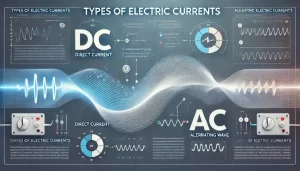- What are the elements of communication systems? Explain with classifications of communication systems
- What is the Frequency Spectrum of Communication Systems? Why Modulation is necessary in wireless transmission?
- What is Amplitude Modulation? Complete Mathematical Derivation of AM Wave
- What is the Importance of Side Bands in Amplitude Modulation? What are the types of AM?
- What is Frequency Modulation? Explain the process with diagram and mathematical analysis
- What is Satellite communication? Give Detailed explanation with diagram and mathematical analysis
In this first part of the series we shall discuss about the fundamentals of communication systems. To exchange the useful information; like ideas, messages, an important document through a medium is called communication. The long distance electronics communication system started with the invention of telephone, by Alexander Graham Bell (1876). After that the communication systems developed very fast. Guglielmo Marconi invented Radio communication (1888) based on ionosphere belt in earth’s atmosphere. The world’s first BW television was invented by John Logie Baird (1925). By the end of World War II (1945), Arthur Clerk invented the experimental idea of satellite communication. Later on the invention of color television took a long time up to 1954. The internet communication was started lately in 1950s, mainly invented by Vint Cerf and Bob Kahn, with the first TCP/IP transmission protocols. The inventions of fax machine, cell phone and RADAR communication are also the major applications in communication electronics.
In this series, elaborately written articles on the basics of communication systems, which start with the concept of elements of electronics communication system.
Elements of Communication System
Any communication system consists of three main sections, the transmitter, the receiver and the communication channel or the medium through which the communication is carried out. This system also includes an unwanted component, known as noise.

Transmitter
It is a collection of electronic devices and circuits designed to convert the data or information into a signal suitable for transmission over a given communication medium. A transmitter may consist of microphone or microwave source.
Communication Channel
It is a medium through which signals travel from one place to another. This medium may be bunch of wires (i.e. bus), fiber-optic cable (i.e. light-pipe) or space (i.e. vacuum). When signals are carried away from one place to another channel, they become weak. This happens due to dissipation of energy, during traveling of signals.
Receiver
It is a collection of electronic devices and circuits designed to convert the received data from transmitter, into an understandable signal. These signals must be suitable for a human being. A receiver may consist of earphone or complicated electronic radio receiver.
Noise is an unwanted but unavoidable electrical quantity. It mixes with transmitted signals when they travel through communication channel.
Example-1
The landline telephone system is a good example of communication system. It consists of two telephone units; the calling unit is the transmitter and the called unit is the receiver. The network in between these two is the communication channel. When the signals flow from one end to other, the noise gets mixed with the signal.
Example-2
Radio station is a transmitter. The space that connects both units is the communication channel. And finally, radio receiver unit is a receiver. Finally the travelling signal mixes with noise.
Classifications of Communication System
According to the applications of communication systems, they are classified under different categories. All these types contain the “Elements of communication system”, as we studied in previous topic.
Types of communication system
- Simplex communication system: Also called as one-way communication. In this system, information travels in one direction only. Examples: radio and television broadcasting.
- Duplex communication system: Also called as two-way communication system because the information travels in both directions. It is classified into two types:
- Half duplex communication system: When communication takes place to-and-fro, but one at a time, it is called half-duplex communication. Example: military and police communication.
- Full duplex communication system: When communication takes place to-and-fro simultaneously, it is called full-duplex communication. Example: telephone communication.
- Analog communication system: When analog signals (for example, sine wave) are used, such system is called analog communication system. Example: intercom system used in offices.
- Digital communication system: When digital signals (for example, square wave) are used, such system is called as digital communication system. Example: internet communication.
- Modulated communication system: When modulation process is used to transmit the signals from one place to another through space or physical medium, it is called modulated communication system.
- Baseband communication system: When communication system does not use modulation process, such system is called base band communication. Examples: telephone system, Morse code.









Great article sir!
Really appreciate your elaborate writing and explanation in simple language.
Please answer: Can we use modulation on visible light or IR light?